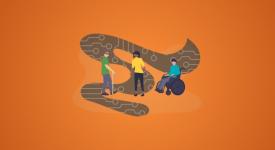Computer Science Doctoral Student Earns Google Fellowship

11/19/2024 - Mina Huh, a computer science Ph.D. student at UT Austin, has been awarded a Google Ph.D. Fellowship, the company announced on November 14.

11/19/2024 - Mina Huh, a computer science Ph.D. student at UT Austin, has been awarded a Google Ph.D. Fellowship, the company announced on November 14.

08/09/2024 - The UT computer science lab, with faculty member Amy Pavel and recent graduate Tess Van Daele at the forefront, has developed an AI system called ShortScribe to enhance accessibility for visually impaired users of short-form videos on platforms like TikTok and Instagram Reels. Pavel, an assistant computer science professor and co-author of the research paper, explained that the system utilizes AI technologies such as Optical Character Recognition, Automatic Speech Transmission, and GPT-4 to segment videos, transcribe speech, and create detailed audio descriptions.

06/27/2024 - Digital media is one of the best ways to engage with new communities, where each click takes you to new, engaging platforms like TikTok, Instagram Reels, and YouTube Shorts. This content is enhanced when you consider the intricacies of webcam visuals and overlays making it a really immersive experience. Now, imagine this experience if you’re unable to see the video. For people with visual impairments, accessing this content comes with many challenges. These platforms currently lack effective solutions to bridge the accessibility gap for the blind and low vision (BLV) community.

05/09/2022 - This semester UT Computer Science welcomed Amy Pavel as a new assistant professor. Pavel's work sits at the intersection of accessibility and computer science. Her research at UT Austin expands on these themes by exploring how people with disabilities as well as those with different situations and preferences interact with emerging forms of media such as virtual reality and augmented reality.

03/07/2022 - When people think of content moderation, they usually imagine some kind of AI program that automatically monitors social media posts to delete inappropriate content. Though some content moderation is indeed performed by AI, a huge part of it is still done manually by people because moderation remains too difficult and nuanced for AI to perform well. In fact, over 100,000 content moderators work globally today to keep the internet safe for the rest of us.